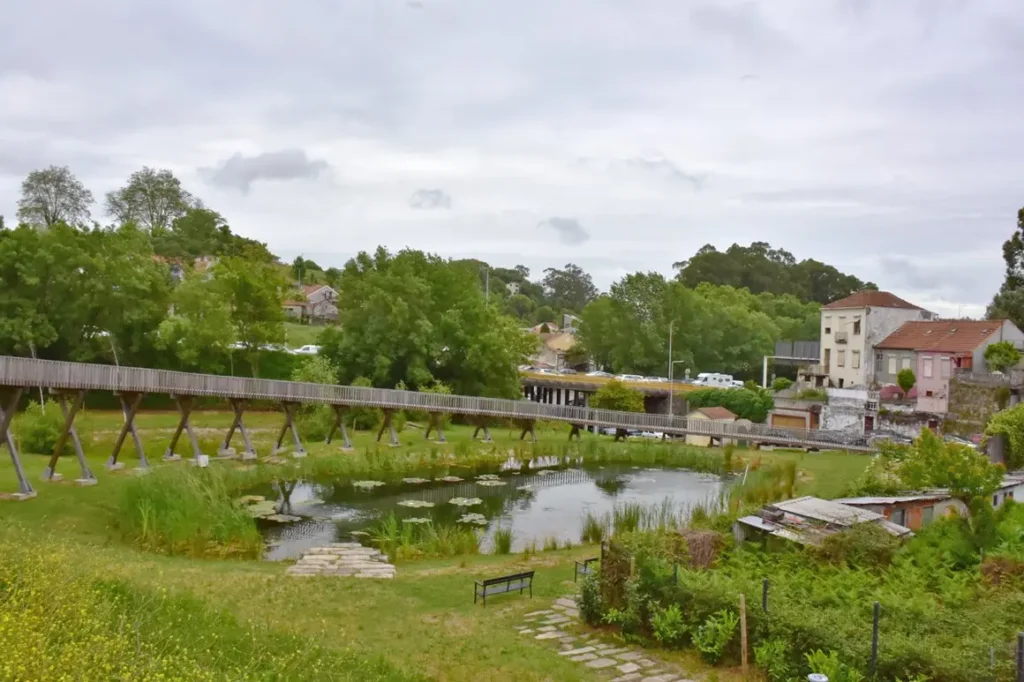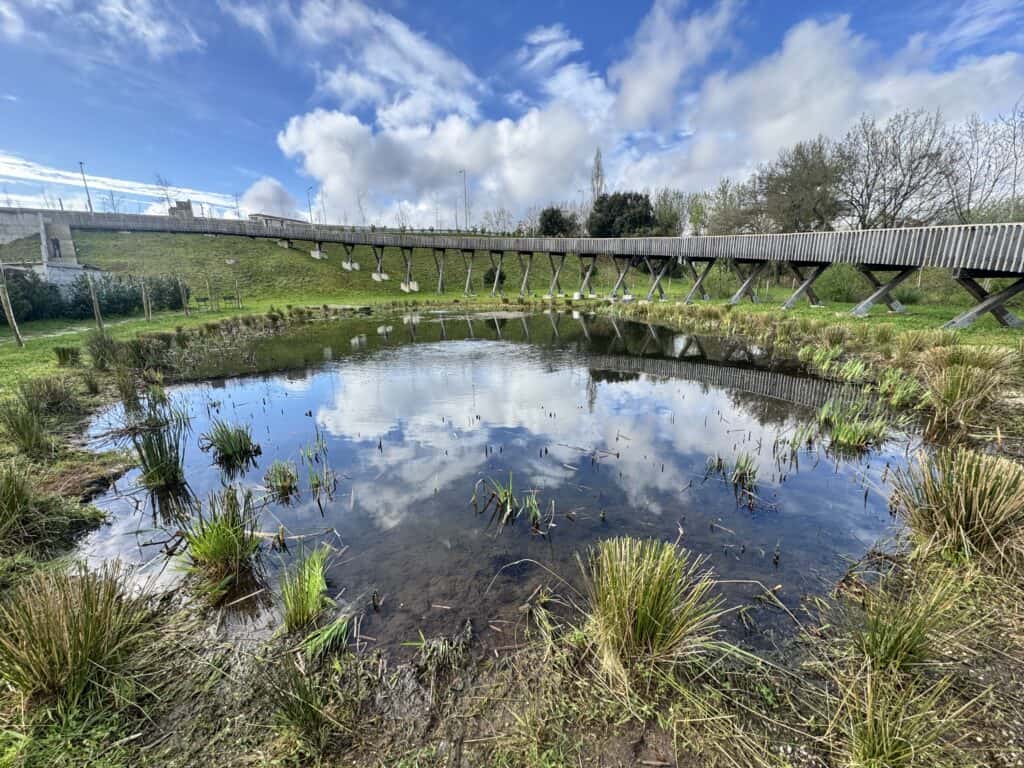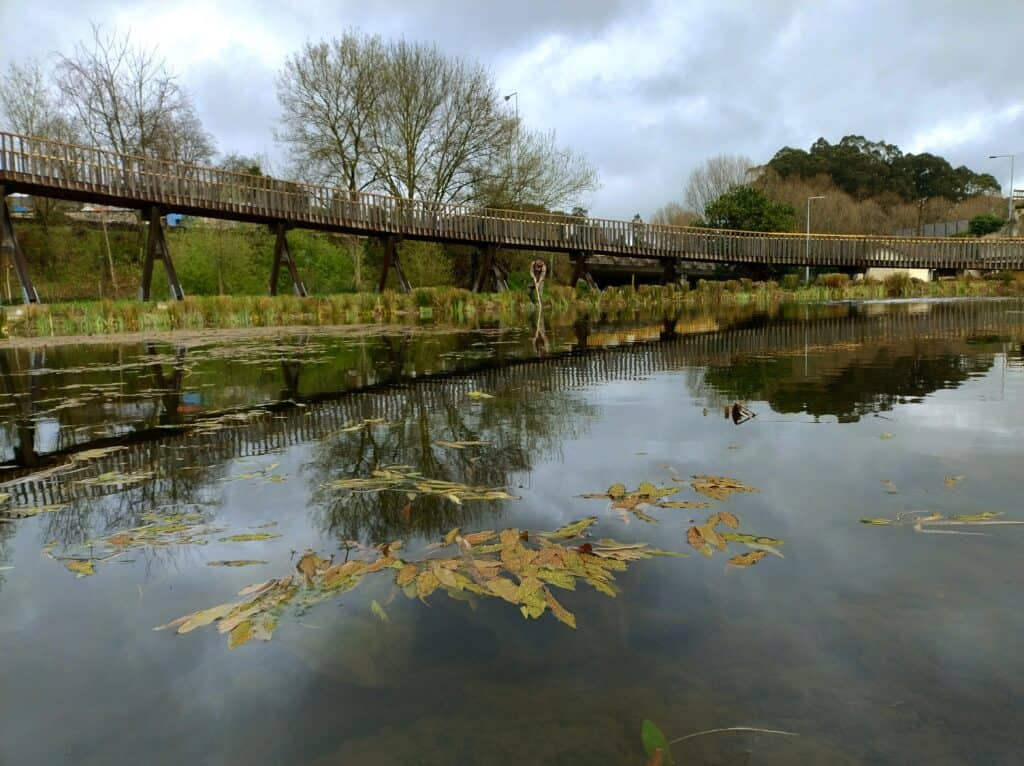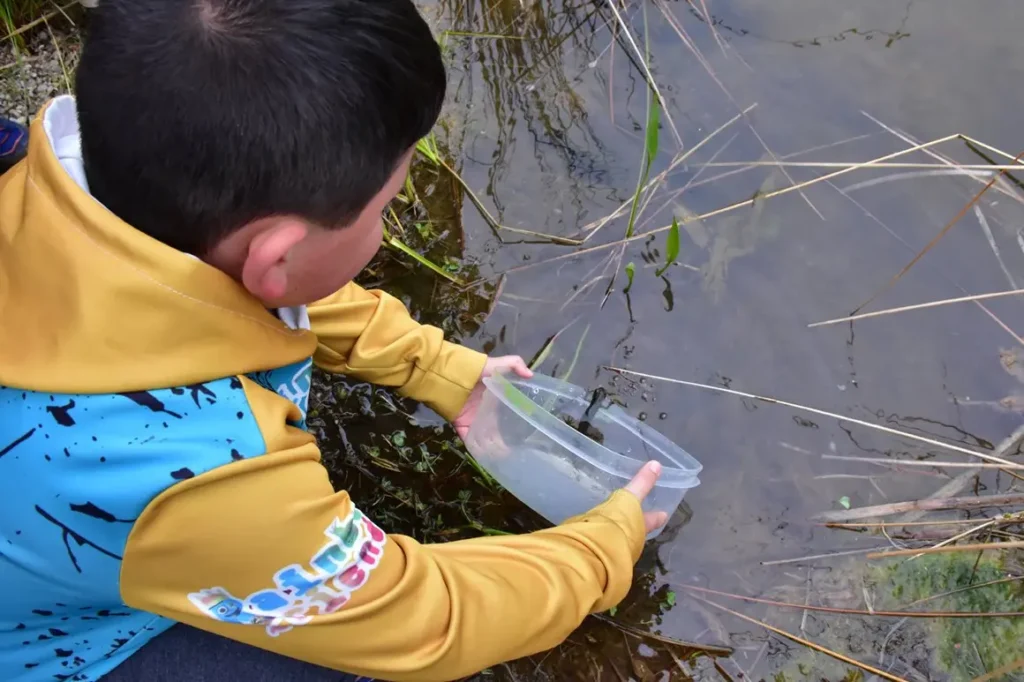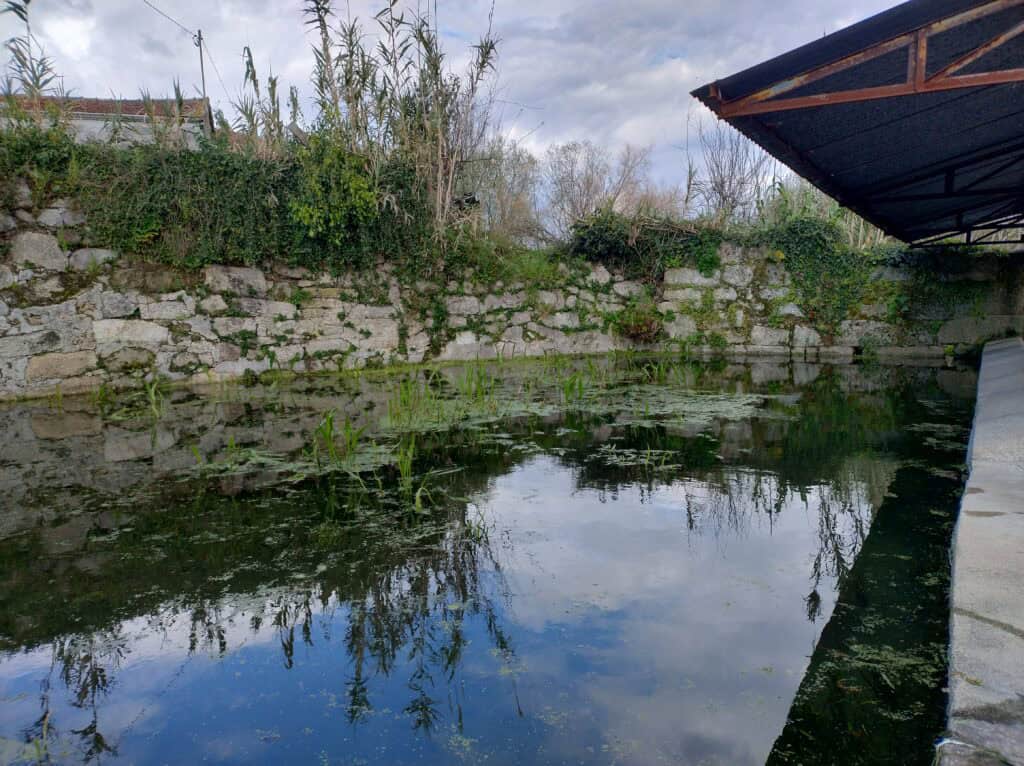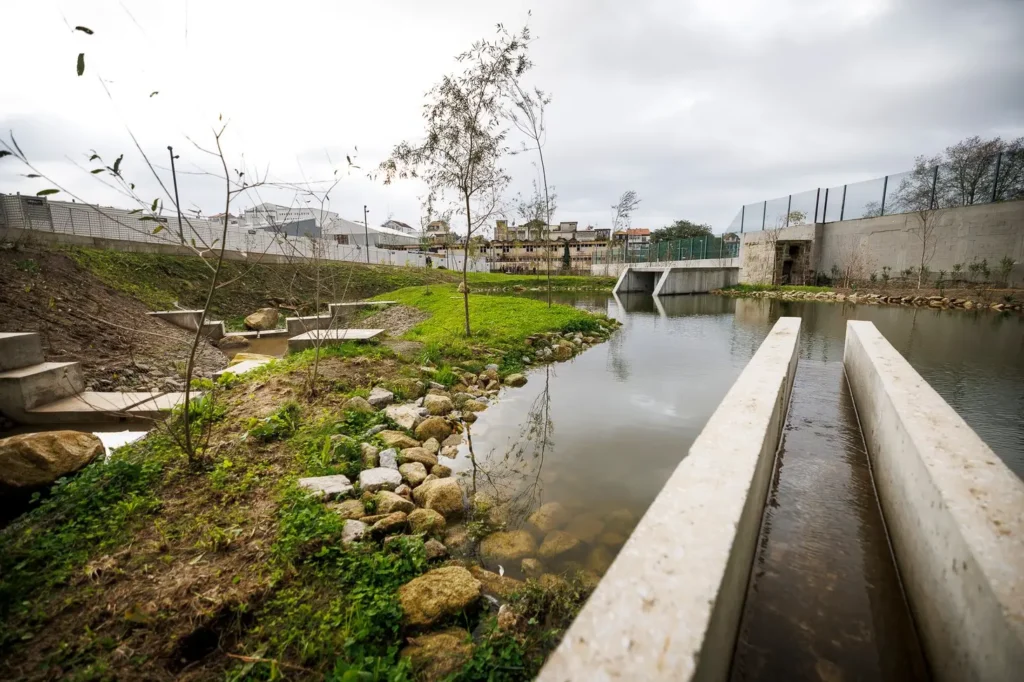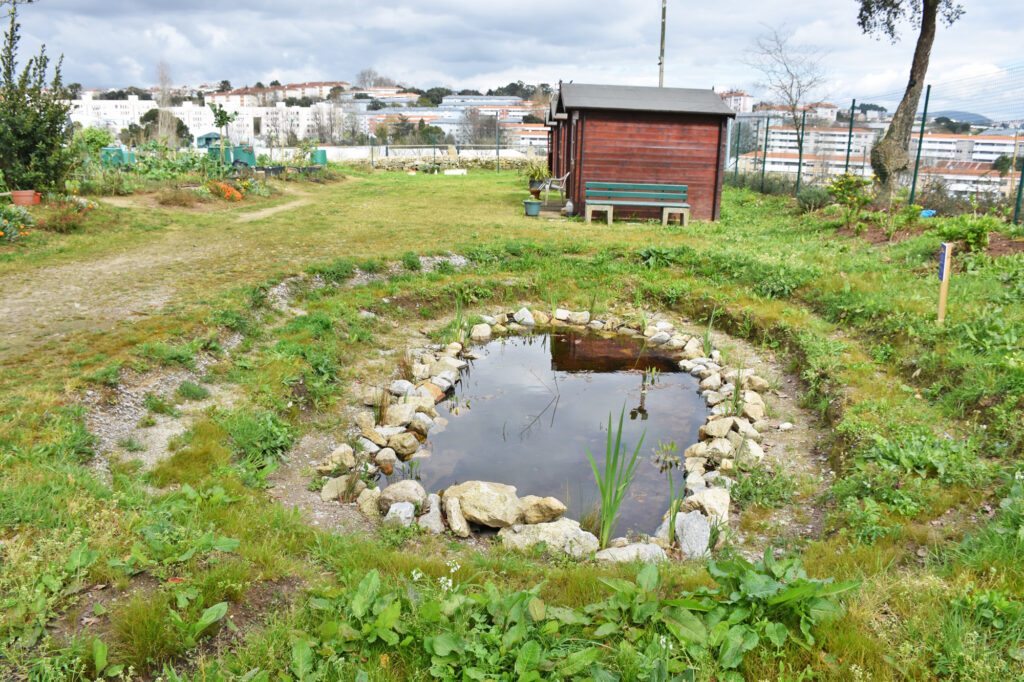The retention basin at the Terminal Intermodal de Campanhã (TIC) is part of a green infrastructure that combines urban functionality and environmental sustainability. This structure collects and filters rainwater, reducing the risk of flooding and promoting aquifer recharge. On the other hand, they act as natural filters of pollutants and contribute to improving water and air quality, which becomes an essential role for the area where it is located, with a dense urban network and heavy traffic. It is also a space of ecological value, which supports urban biodiversity by providing various habitats, particularly for amphibians, where several species have been introduced to the site (e.g. Triturus marmoratus and Lissotriton boscai). Also noteworthy is the presence of aquatic plants such as Myosotis debilis and Juncus heterophyllus.
In addition to its environmental purposes, it also has social functions, with pleasant leisure areas for visitors and a functional children’s playground that blends in with the natural landscape in an integrated way.
The TIC has already been recognised with architectural and sustainability awards as it represents an example of how urban infrastructure can regenerate degraded areas and benefit both the environment and the community.
The maintenance of the retention basin was carried out by the Municipality, in partnership with CIIMAR (Interdisciplinary Centre of Marine and Environmental Research). The main objectives of this interventions are to increase knowledge of the city’s wetlands, mapping, biological inventory and characterisation, with a view to adopting conservation and restoration measures and creating new water bodies
